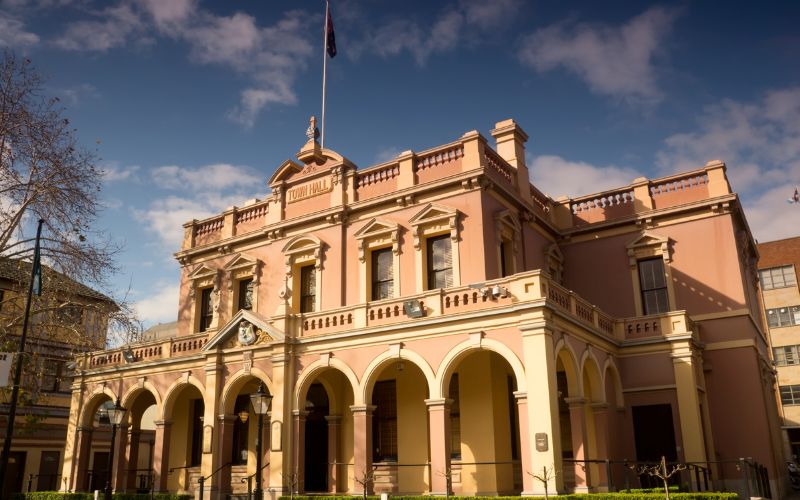Many local councils across Australia have started their CX and digital transformation journeys. They are all at different stages of their journey, have different objectives and have greatly differing requirements but they all share one key objective – to promote ‘trust’ between citizens and the local governments that are meant to serve them.
Local governments in Australia are typically very complex organisations providing numerous services to a very diverse range of people and communities. Aside from services around property, waste management and roads, over 50% of council budgets are spent on community services that can include health care, parking, aged care services, fitness and recreation facilities, parks and so on.

Greg Curcio, director of customer and technology at City of Stonnington
Greg Curcio, director of customer and technology at City of Stonnington, comments, “Stonington Council provides 120 different types services to the residents, businesses, communities and visitors to Stonington. We run multiples events throughout the year. We also need to involve the community in planning decisions as well as engaging and supporting local businesses.”
This complexity of services provided can cause problems, however, where legacy information systems, poor data integration and organisational silos impact a local government’s ability to deliver fast and efficient service to its constituents. To improve the speed and efficiency of their service delivery, local governments in Australia are investing considerable resources in CX initiatives and programs.
Customer experience in the context of local government

Tash Tobias, division manager – lifestyle and community services for Brisbane City Counci
Local governments view CX as a means of delivering personalised service to their residents and communities while streamlining processes and reducing costs. Tash Tobias, division manager – lifestyle and community services for Brisbane City Council, comments, “Though as a local council we don’t operate in a competitive environment, that does not absolve us of the responsibility to take care of the people who pay their rates and pay our salaries. For us, we think of CX in terms of doing the right thing and driving the organisation as well as the city of Brisbane forward.”
Increasingly, citizens, influenced by their customer experiences with commercial organisations, are expecting the same level of efficient and personalised service when dealing with government. Expectations have been set high by organisations such as Amazon, Apple, and Netflix, whose personalised service and convenience have created extraordinary customer loyalty.
Tobias highlights, “In the past, when it comes to government and the public service, the expectations of customers have traditionally been very low. I would argue that this has shifted quite dramatically. Customer expectations are increasing across all aspects of consumer behaviour. As a result, their expectations are also increasing for local government service delivery”.
Building trust and engagement leads to better cities and communities
For Greg Curcio the main reason for local councils to invest in CX is around ‘trust’, he comments, ”I think customer experience in local government comes down to earning trust and building confidence in representative democracy. There is a trend towards disengagement and cynicism towards government and public services.”
“The reason councils are heading down a very customer centric route is to provide more value and to provide more efficient service, better services and better quality, so we can build greater trust and engagement within the communities we serve. Greater engagement and trust means more people are involved in the system which means a greater diversity of thought in the way we plan our cities. The more people that are engaged – the better the decisions and the transparency of those decisions”, says Curcio.
Tobias concurs, “For us, at Brisbane City Council, customer experience is about building trust. The research suggests that great customer experience leads to a higher degree of trust with customers, who, in turn, will be more engaged in what we’re trying to achieve for the city of Brisbane. They will be more willing to contribute when we ask them for input about what we should do in certain communities or certain spaces.”
Removing the roadblocks to customer centricity
Being such complex organisations can present a series of challenges. According to Tobias, the issues facing local councils are very similar to the challenges that face commercial organisations, “I don’t think the challenges are very different from any other organisation. After all, we’re all trying to be more customer centric and making things much easier for the customer. One of the big issues everyone faces is the difference between how customer centric we may think we are and how custom centric we actually are.”
Critical to achieving customer centricity and the ability to provide fast and efficient service is access to relevant data about customers and the interactions they have with the organisation. Data silos within an organisation and the maintenance of legacy systems will impact the speed, efficiency and quality of the service that can be provided.
The current culture combined with outmoded ways of working and competing agendas between different areas of the organisation can make it difficult to change things. Curcio comments, “Many local governments face the challenge of having large legacy processes and systems in place. There’s the whole underlying capability around processes, systems, data and people capability that needs to be reviewed and upgraded in order to provide the level and quality of service customers expect.”
CX initiatives and programs typically require substantial investment in updating processes, technology and information systems as part of a broader digital transformation project. However, local councils, like businesses, have budget limitations. Tobias advises, “You can’t tackle everything all at once. You need to understand what the biggest issues are, but more importantly which issues, that if you solve them, are going to drive the biggest or best outcomes.”
“I think with a lot of organisations try to do too much and as a result end up achieving very little. You need to be really clear about what you are going to do and when, what outcomes you expect and then measure everything along the way to ensure your tracking towards your goals.”
Curcio emphasis the importance of obtaining buy-in and support from the CEO, senior executives and the elected representatives for the council. He says, “without that support your CX programs will never achieve cut through across the organisation”.
Fundamental to achieving that buy-in from stakeholders, according to Tobias, is the ability of building a strong case for what you want to do and what it will achieve. “For CEOs and senior executives their first thought when you start talking about customer experience is that you’re going to spend a whole truck load of money. You need to build your case so that executives understand that you are trying to streamline processes and to deliver greater value to customers, employees and for the organisation. For commercial organisations that means more profit, for local councils that means more money can be spent in other places that have a community outcome.”
Curcio believes that for local government, whose core purpose is to serve local residents, communities, visitors and businesses, customer-centricity should be at the heart of everything it does. “If we don’t have empathy for those who live, work and visit here and at least understand what they need then it’s going to be very difficult for any CX strategy to get up and running. You have got to have a love and empathy for customers and you’ve got to do everything in your power to do anything that they need in order to serve them correctly”.


